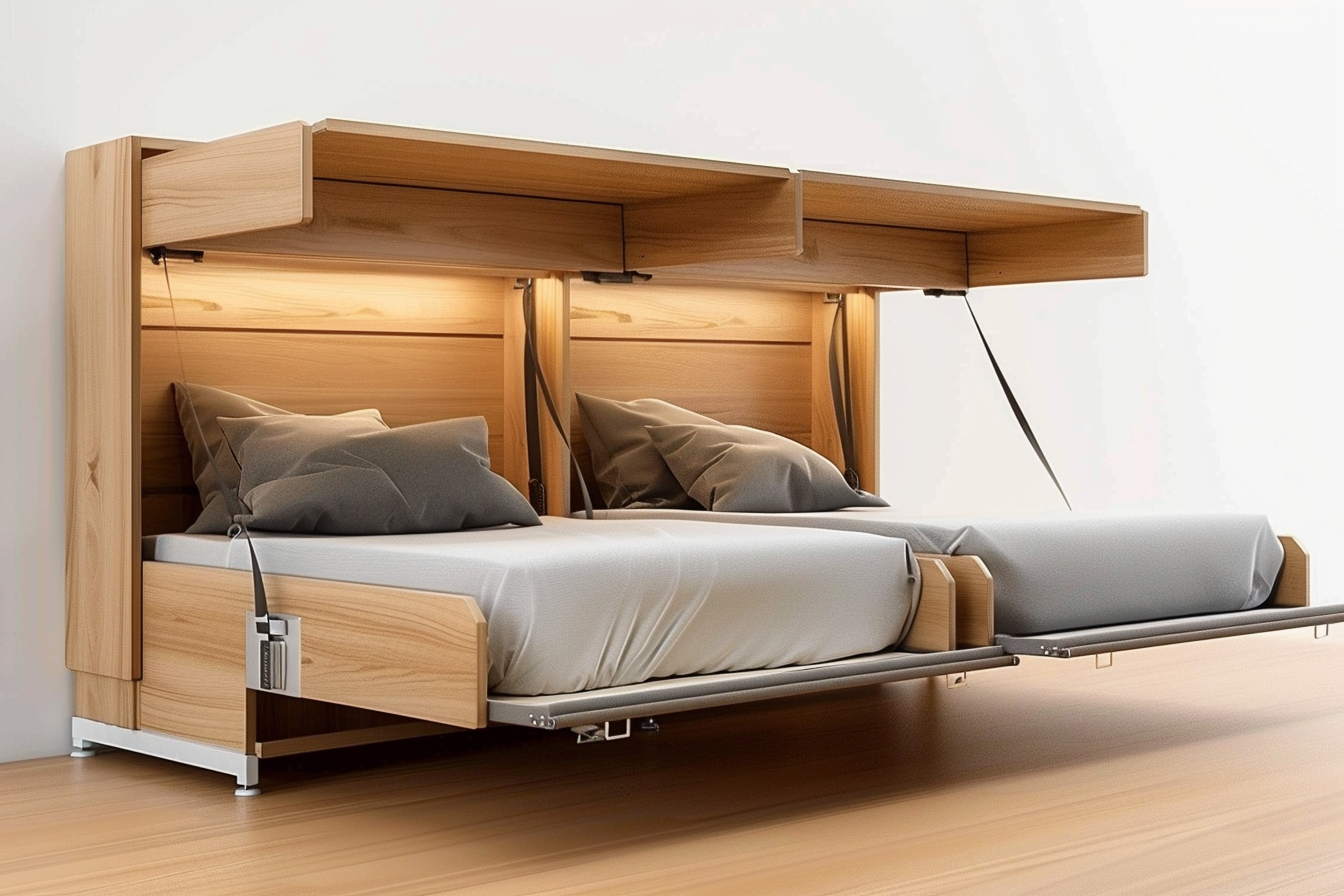Space-Smart Folding Beds: Your Guide to Compact Living
Discover how folding beds can transform small apartments, guest rooms, and multipurpose spaces. This guide explores murphy beds, sofa beds, rollaways, and cabinet beds—covering comfort, mechanisms, sizing, and maintenance tips to help you pick the best space-saving sleeping solution for modern living. Learn what to look for in mattress quality, frame strength, and functional features to maximize both comfort and floor area.

Key considerations when choosing a folding bed
When buying a folding bed, focus first on comfort and durability. Mattress construction and thickness play a major role in nightly comfort—memory foam, innerspring, and hybrid options each have pros and cons depending on how frequently the bed will be used. The bed frame and its materials determine long-term stability; steel and hardwood frames usually outlast lightweight alloys or particle board.
Pay attention to the folding mechanism. Some models use hydraulic or gas-assist systems to make deployment and stowing effortless, while others rely on manual levers or simple hinges that require more strength. How easy it is to open and close the bed affects daily convenience and safety, especially in homes with older adults or limited mobility.
Measurements are critical. Know the footprint of the bed both extended and folded so you can plan circulation and furniture placement. Clearance around the bed for bedding, headroom, and any integrated features (like shelves or desks) should be checked before purchase. Also factor in mattress storage or compatibility—some folding systems require a thinner mattress or a specific mattress type.
Murphy beds: maximize a room’s potential
Murphy beds remain one of the most efficient space-saving solutions. Mounted vertically or horizontally to a wall, these beds fold away to reclaim floor space when not in use. Today’s Murphy beds are far more than simple fold-up frames: many include built-in shelving, cabinets, LED lighting, or integrated desks that turn a bedroom into a home office or hobby area in minutes.
The modern revival of the Murphy bed blends functionality with style. Choose models with secure locking mechanisms and reinforced frames to guarantee stability when lowered. If you plan to use the bed daily, prioritize systems with smooth, assisted opening and closing mechanisms to reduce wear and tear.
Sofa beds: daytime seating, nighttime comfort
Sofa beds are designed to serve two functions without sacrificing aesthetics. During the day, they act as your main seating zone; at night, they convert into a bed. Advances in mattress technology—such as higher-density memory foam and pocketed coils—have dramatically improved sleep quality on many sofa bed models.
Consider how the sofa bed folds: pull-out frames, click-clack designs, and bifold or trifold mechanisms each have different comfort and durability profiles. If you expect frequent overnight use, opt for a model with a high-quality mattress and a robust frame. For occasional use in a studio or guest room, a simpler design might be perfectly adequate.
Other options: cabinet beds and rollaways
Cabinet beds provide a decorative facade while hiding a fold-out bed inside, offering both storage and compactness. They suit rooms where aesthetics matter and can double as a storage cabinet or display unit when closed.
Rollaway beds are portable, lightweight, and often come on wheels, making them ideal for temporary sleeping solutions or adding extra beds for guests. They’re typically less expensive and easy to stow in a closet, though they may not match the comfort or durability of fixed folding systems.
| Type | Average Price Range | Key Features |
|---|---|---|
| Murphy Bed | $1,000 - $3,000 | Wall-mounted, space-saving, often includes storage |
| Sofa Bed | $500 - $2,000 | Dual-purpose furniture, various styles available |
| Cabinet Bed | $800 - $2,500 | Decorative storage, compact design |
| Rollaway Bed | $150 - $500 | Portable, easy storage, wheels included |
Prices, rates, or cost estimates mentioned in this article are based on the latest available information but may change over time. Independent research is advised before making financial decisions.
Maintenance and care to extend lifespan
Routine upkeep will keep folding beds functioning smoothly for years. Inspect hinges, locks, and moving parts periodically for signs of wear, loose screws, or corrosion. Clean tracks and pivot points to remove dust and debris that can impede motion. When recommended by the manufacturer, apply a light lubricant to hinges and hydraulic components—but avoid over-lubrication, which can attract dirt.
For mattress longevity, rotate or flip the mattress periodically to minimize uneven wear and indentations. If your folding bed stores bedding or integrates storage, ensure items are dry and clean to avoid moisture buildup that could damage the frame or mattress.
Choosing the right folding bed for your needs
Match the bed type to how you’ll use it. For daily sleeping in a small apartment, prioritize mattress comfort, durable hardware, and a stable frame. For a multipurpose room, look for Murphy beds with built-in desks or shelving to enhance utility. If you need a stylish solution that also provides storage, consider cabinet beds. For occasional guests or temporary extra sleeping space, a rollaway bed is often the most economical and portable option.
Set a realistic budget that reflects how often the bed will be used and how important aesthetics and features are to you. Don’t skimp on mattress quality if the bed will be used every night—sleep health and comfort are worth the investment.
Folding beds continue to evolve, blending improved materials and smarter mechanisms to better serve compact living. By weighing mattress type, mechanism ease, frame construction, and room dimensions, you can select a space-saving bed that balances comfort, durability, and style for your home.






